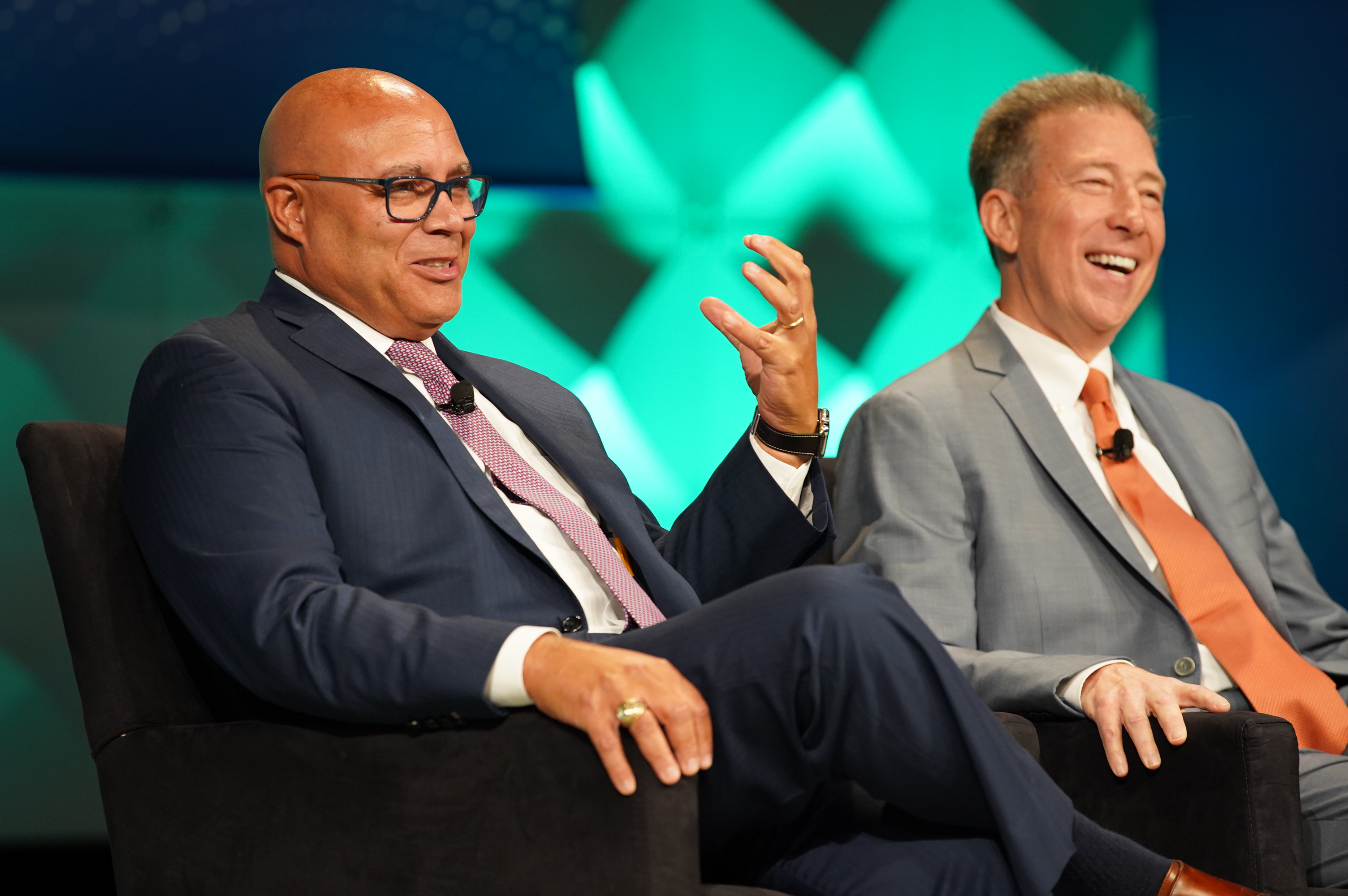Promotion, Retention Are Key to Inclusion

Cable operators and programmers took heart from new survey results showing increased employment opportunities for people of color and women, the same week that companies contributed more than $1.4 million to bolster diversity efforts during the industry’s annual Walter Kaitz Foundation dinner.
Still, executives said the challenge remains to continue recruiting new, diverse and inclusive talent while working harder to keep executives of color and women from leaving for other industries.
“As we open the report card on our own [diversity] efforts and continue striving to advance the cause of diversity, we do so understanding that … the business of a diverse America is diverse business,” NCTA president and CEO Michael Powell said during the industry’s Diversity Week programs in New York, including the annual Women in Cable Telecommunications (WICT) Leadership Conference and the National Association for Multi-ethnicity in Communications (NAMIC) Conference.
Related: NCTA's Powell Urges Industry to Take a Stand
Signs of Progress
Findings of the two-year AIM/PAR Workforce Survey from WICT and NAMIC include an increase in representation of people of color and women in executive and senior-level management positions by 3% and 2%, respectively, compared to the last survey in 2017. Hiring rates for people of color exceeded the rate for white people by roughly 15% compared with the last survey, while hiring rates for women exceeded the rate of men by nine percentage points.
The positive results stem from continued efforts to cultivate an industry culture that welcomes women, as well as people from all backgrounds, Comcast senior executive VP and chief diversity officer David Cohen said during the Sept. 17 town hall meeting where the report was unveiled.
Broadcasting & Cable Newsletter
The smarter way to stay on top of broadcasting and cable industry. Sign up below
“What other industry in America does what we’re doing?” Cohen asked rhetorically. “We have senior executives, managers and executives, women and people of color collectively getting together to attend seminars, sessions and learning best practices in the D&I space. We’ve created an enlightened culture around D&I, and that is what is driving our success.”
While the survey showed positive results, industry executives said it also showed some weaknesses in diversity efforts that need to be addressed. Paramount is turning around low promotion rates and high departure figures for women and executives of color.
Promotion rates for people of color are lower than for white people, and white professionals younger than 36 are promoted at more than two times the rate of young professionals of color, according to the survey. Also, the turnover rate for people of color is 11% points higher than their white counterparts, and for women it is 7.3% points higher than for men.
“A lot of time when we talk about inclusion, workplace and culture efforts, but internal mobility and having an opportunity to advance is part of inclusion,” Johnita Due, senior vice president and chief diversity & inclusion officer for WarnerMedia News & Sports, said at the town hall.
Charter Communications senior vice president and chief diversity officer Rhonda Crichlow said that increased executive mentorship is one of the keys to retaining quality, diverse and inclusive executives.
“For anyone to be successful in a corporate environment, they need to make sure that they have adequate sponsorship in the organization to help them continue to [thrive],” Crichlow said. “What we know is that people of color … are under-mentored and underdeveloped compared to their peers. So the question for us is, what are we going to do about it, because we know that when they get that level of sponsorship they are inclined to stay in organizations longer and they are inclined to be much more satisfied with their career experience.”
Added Powell: “Mentorship is imperative to the industry’s advancement of diversity and inclusion. If you’re going to be a great mentor you’re going to be a truth-teller … you can’t make someone a superhero if they haven’t bought the right cape.”
See It, Then Be It
Comcast’s Cohen said it is also important for young women and people of color to see diverse executives in the workplace if the industry is going to retain the best and the brightest talent. Fifty-three percent of Comcast’s workforce now reports to a person of color or a woman, Cohen said, compared to a mid-40% share of employees five years ago.
“As the pressure gets put on other industries like the tech industry to hire diverse talent, they’re coming for our diverse talent,” he said. “The competition for our diverse talent is much more intense than it has ever been, and I think that’s contributing to our turnover problem. It’s a war everyday.”
To aid in the industry’s diversity efforts, the Walter Kaitz Foundation’s annual fundraising dinner raised more than $1.4 million, consistent with the numbers in recent years. The cash helps fund NAMIC, WICT, and internship-placing organizations Emma L. Bowen Foundation and T. Howard Foundation to help advance diversity, equity and inclusion within the industry.
“True inclusion is a sthroughtful, vigorous and disciplined exercise that is needed in order to develop strategies to ensure (the industry) lives up to our goals in business, in society and in life,” Kaitz executive director Michelle Ray said.
R. Thomas Umstead serves as senior content producer, programming for Multichannel News, Broadcasting + Cable and Next TV. During his more than 30-year career as a print and online journalist, Umstead has written articles on a variety of subjects ranging from TV technology, marketing and sports production to content distribution and development. He has provided expert commentary on television issues and trends for such TV, print, radio and streaming outlets as Fox News, CNBC, the Today show, USA Today, The New York Times and National Public Radio. Umstead has also filmed, produced and edited more than 100 original video interviews, profiles and news reports featuring key cable television executives as well as entertainers and celebrity personalities.

